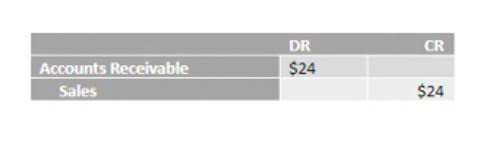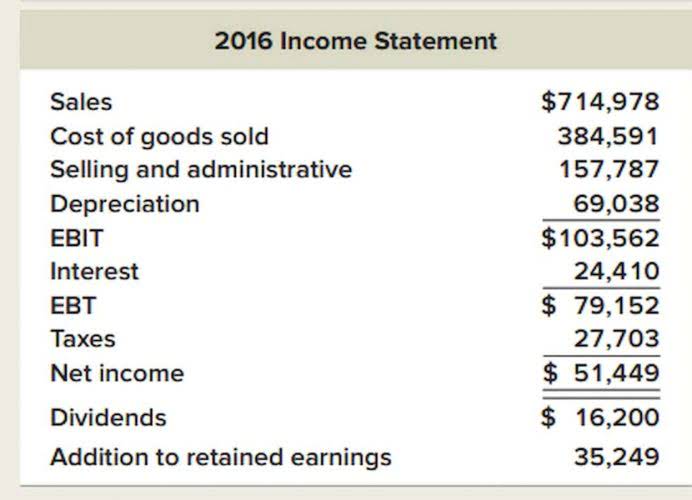The tax rate has increased in many areas of the country, meaning that companies will cost more to manufacture their products. This is especially true when dealing with commodities such as steel, coal, and other minerals that don’t grow on trees (or anywhere else). These two categories of expenses help you determine how much it costs to make your product or service after subtracting any sales tax (if applicable). You can then use this information when deciding what price point is necessary to break even on each sale while still turning a profit overall. Indirect manufacturing costs are considered fixed because they don’t change much yearly, no matter how much is produced or sold.
As a result, many companies have had trouble hiring qualified candidates and remain understaffed even after offering higher wages than competitors in their industry. The labor market is tight due to the growing demand for skilled workers in manufacturing. The demand for skilled workers has increased significantly over the last decade, outpacing the growth of other occupations. As a result, job seekers face a competitive landscape, particularly in their search for entry-level positions. Companies have to spend money on complying with these regulations and training their employees on how to comply. Second, those who work in manufacturing tend to be unionized and therefore have higher wages than non-union employees for similar jobs.
Manufacturing overhead
COGS calculates the costs of items that not only finished the product creation journey but also got sold to a customer. In contrast, total manufacturing cost (TMC) includes any production costs within a window of time, regardless of what was finished or sold. Manufacturing overhead does not include costs unrelated to the manufacturing process like administration wages, sales and marketing expenses, office rent, etc. These are general costs of doing business and are calculated separately as overhead expenses for the manufacturing business. The direct material cost should never be calculated by multiplying the number of final products with the material quantities from their BOMs. Work in process inventory, waste, and scrap all need to be accounted for as well.
- Manufacturing businesses calculate their overall expenses in terms of the cost of production per item.
- There’s a lot of ways to do this, but in today’s digital age, that usually means automating.
- If so, management might delve into the purchasing process, to see if inventory can be acquired and stored in smaller volumes.
- • or monthly write off to reduce the financial result, without distributing it to the price (the so-called “direct costing” system).
There are many reasons why this is happening, and it is essential to understand the factors contributing to the increase in manufacturing costs. First, you’ll need to know the direct labor hourly rate (the labor cost per hour). To illustrate this, let’s say that we have a company that makes widgets, and we want to know how much it costs us per widget to produce them. We would review our records from last month Total manufacturing cost and find our beginning inventory, then add up all purchases during the month and subtract anything we sold at the end of the month. In short, direct manufacturing costs are the ones that go directly into making the product itself. Whether in retail or manufacturing, knowing how to calculate your manufacturing costs will help you understand where you stand regarding profitability and how to improve it.
Learn the importance of journals in recording manufacturing costs and how period costs are included as well. Total manufacturing costs add up to the sum of beginning work in process and total manufacturing costs incurred. To arrive at the cost of production per unit, production costs are divided by the number of units manufactured in the period covered by those costs. Prices that are greater than the cost per unit result in profits, whereas prices that are less than the cost per unit result in losses.
Direct costs for manufacturing an automobile, for example, would be materials like plastic and metal, as well as workers’ salaries. Indirect costs would include overhead such as rent and utility expenses. Total product costs can be determined by adding together the total direct materials and labor costs as well as the total manufacturing overhead costs. To determine the product cost per unit of product, divide this sum by the number of units manufactured in the period covered by those costs. Your business’s total manufacturing overhead summarizes the indirect costs of producing finished goods.
How to Reduce Direct Material Costs
The first distinction is between the three major costs components of manufacturing a product — these can be direct or indirect. Some things never touch your product but still need to be in your total cost calculation. Know all your production costs in real-time, by using MRP software such as Brahmin solutions. If you want to learn more, book a demo with one of our product consultants. Knowing and anticipating these changes will help you stay on top of your production costs and keep your business profitable.
You make money on each sale if you can sell your product for more than its manufacturing costs. You will lose money on each sale if your manufacturing costs exceed your selling price. Knowing the total cost of manufacturing a product can help ensure that products are priced appropriately and that businesses are making a profit. This is because companies can sell their products at a lower price, making them more affordable to consumers. Additionally, lower costs can help companies expand their operations and hire more workers — boosting the economy by creating new jobs and increasing consumer spending.
Availability Of The Raw Material- Manufacturing cost
They cost more to produce in bulk because there is less demand for rare metals. Also, if your raw material is tough to process, like diamonds, it might be worth paying more because the process can take so long and require much labor and energy. The quality of raw materials can be the difference between a great product and a terrible one. If you’re manufacturing something that will be used daily, like a kitchen knife or a pair of shoes, you want to ensure that it will last for as long as possible. The availability of raw materials has a significant impact on their price. If there are shortages in any particular area, this will cause prices to rise as there will be less supply available to meet demand.
For example, a company may price its products lower than the competition to gain market share. Whatever the decision, it’s important that it be based on a thorough understanding of product costs and other factors. Now we know how to calculate the average hourly labor rate per employee and the direct labor hours to make one unit, we can calculate the direct labor cost per unit. Producing too much stock in advance means you are spending a lot on direct materials costs and you will also incur the cost of holding this excess inventory. If you are a business that deals with perishable goods then overproducing and not being able to sell off your inventory can lead to waste. The point is that the total fixed price usually do not depend on how much and what kind of products the company will release in a given month.
These small changes can drastically help you reduce manufacturing costs. Understanding total manufacturing costs is an important step for businesses that want to improve manufacturing productivity. In terms of indirect materials, this would be a resource that doesn’t necessarily form part of the finished product.

Today, we’ll be delving into the total manufacturing cost formula and how to use it. A cost accounting system is a system that tracks the costs of all the resources used in the production of a product. Activity-based costing is a great way to manage your company’s finances. It allows you to see where your money is going and how much it costs to produce products and services, so you can make informed decisions about where to invest your resources. For example, working with a rare metal will make it more costly than working with a standard metal like iron or steel.
If you conclude that costs are as low as possible, but revenue is still struggling, the next step could be to alter your pricing. If you set prices too high, customers may go to competitors where they can find a better deal. Equally, if prices are too low, you won’t be generating the required revenue to make your business profitable.
What Affects The Cost Of Raw Materials? Cost of manufacturing
It’s useful to note that the same raw material might also be used as both direct and indirect material pools. For example, for a soda producer, water is used as a direct material, forming the body of the drink. However, water could also be used as an indirect material to wash the bottles or equipment. It’s necessary to keep these types of consumption separate for accounting purposes. While quite basic on paper, gathering precise information on all these constituents can be a challenge in real life.
While this formula is as easy as adding these costs together, you must first know how to calculate direct materials, direct labor, and manufacturing overhead. These calculations are only possible by maintaining detailed financial records on each variable. Determining the total cost of creating a finished product will help inform financial decisions such as setting product pricing, determining profit margins, and increasing productivity. Manufacturing is a tricky business, especially when trying to calculate total manufacturing costs.
How To Calculate Direct Labor Costs
For example, suppose a company has an internal call center that handles customer service calls and provides sales reps support. In that case, the call center’s expenses might be allocated to the manufacturing and sales departments. New machines are expensive and require additional training for employees using them. Suppose a manufacturer is not careful about how they implement new technology. In that case, they could use it ineffectively or even waste money on systems that don’t work for them (e.g., software that doesn’t fit the company’s needs). For example, suppose you’re unaware of the new deduction for pass-through businesses (which allows companies to deduct 20% of their income).
This has increased the demand for skilled workers, which has led to higher wages and labor costs. It also consists of other costs directly related to producing a specific product, such as tooling or die costs. Direct manufacturing costs are considered variable because they change as production levels change. The total direct manufacturing costs are usually expressed as a percentage of the sales price for each product. A company that doesn’t understand its product costs clearly may end up selling its products below cost, resulting in losses. On the other hand, a company that prices its products too high may miss out on potential sales and market share.
Because if more people want it, there is less available, so the price goes up. If a product needs a specific raw material and there are not enough supplies, then this will mean that the manufacturer has to pay more money to get hold of it. Fuel prices are rising because of the rise in oil prices caused by turmoil in the Middle East and other parts of the world. Companies must pay more to get their products to their customers, affecting their bottom line. For Example, if Scott wanted to keep lower his Overhead rate to the nation average of 35% he can increase his sale prices by $5-6 or reduce his overhead monthly costs by $2,000 per month. Custom products cost more than mass produced products because a custom product typically requires an additional step in the production process, increasing the expense.
George calculates the TMC by adding the cost of direct materials, the cost of direct labor and the overhead costs. One option is to charge the entire amount of this cost to expense in the reporting period, which means that total manufacturing cost is the same as the cost of goods sold. This situation arises when a business is barely keeping up with customer demand. The second option is for a portion of this cost to be charged to expense in the period, where some of it is allocated to goods produced in the period, but not sold. Thus, a portion of total manufacturing cost may be assigned to the inventory asset, as stated in the balance sheet. In the latter case, a business is manufacturing more goods than is initially demanded by customers.
Classification of price by the way they are included in the cost of products, works and services into direct and indirect. It is this classification that determines the procedure for reflecting price on certain synthetic accounts, sub-accounts, and analytical accounts. As a manufacturing executive, you’ll want to look for any way to lower your overhead because it directly affects revenue and production costs. For example, a small business that manufactures widgets may have fixed monthly costs of $800 for its building and $100 for equipment maintenance. These expenses stay the same regardless of the level of production, so per-item costs are reduced if the business makes more widgets.








